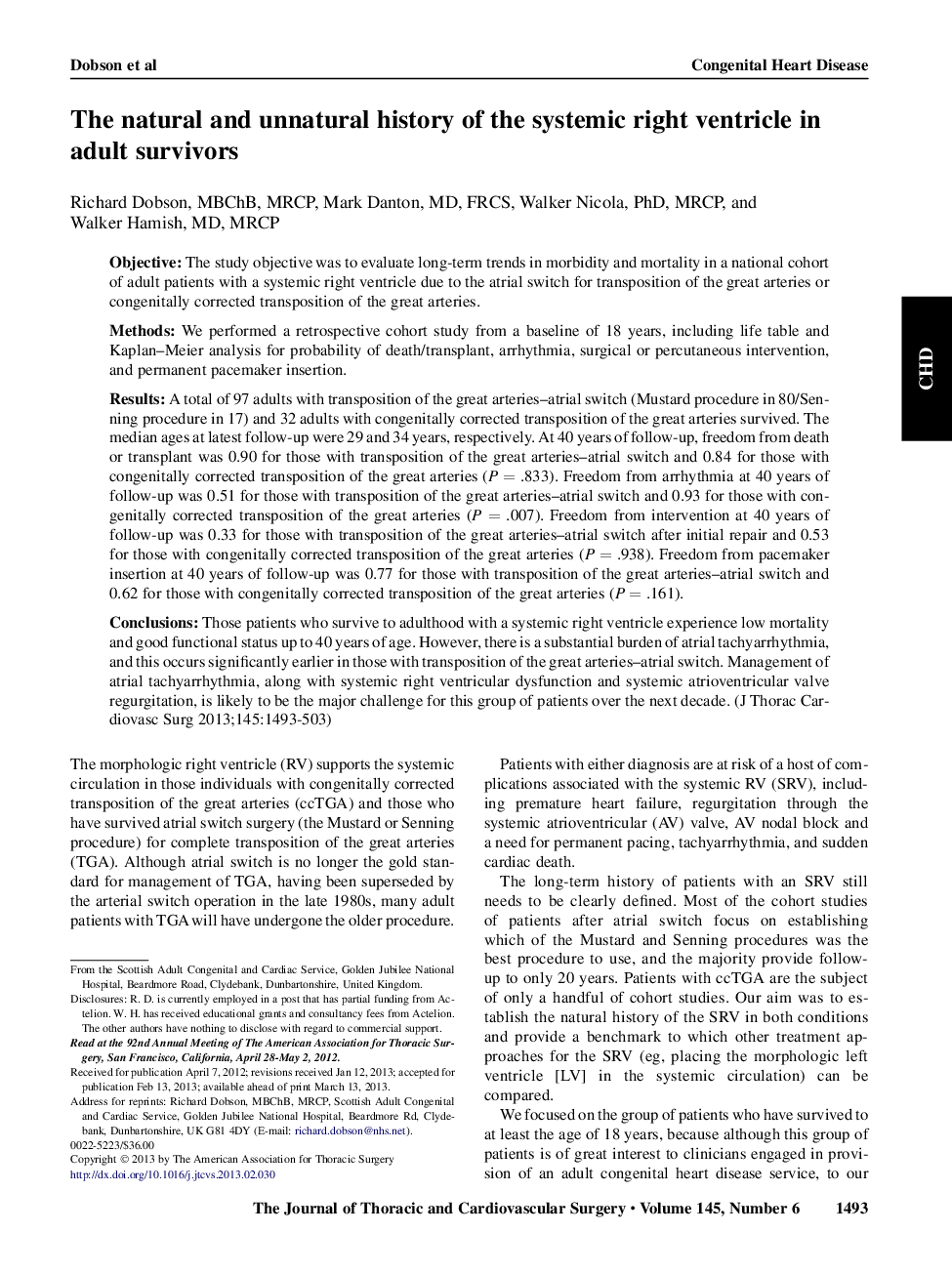| Article ID | Journal | Published Year | Pages | File Type |
|---|---|---|---|---|
| 2981195 | The Journal of Thoracic and Cardiovascular Surgery | 2013 | 11 Pages |
ObjectiveThe study objective was to evaluate long-term trends in morbidity and mortality in a national cohort of adult patients with a systemic right ventricle due to the atrial switch for transposition of the great arteries or congenitally corrected transposition of the great arteries.MethodsWe performed a retrospective cohort study from a baseline of 18 years, including life table and Kaplan–Meier analysis for probability of death/transplant, arrhythmia, surgical or percutaneous intervention, and permanent pacemaker insertion.ResultsA total of 97 adults with transposition of the great arteries–atrial switch (Mustard procedure in 80/Senning procedure in 17) and 32 adults with congenitally corrected transposition of the great arteries survived. The median ages at latest follow-up were 29 and 34 years, respectively. At 40 years of follow-up, freedom from death or transplant was 0.90 for those with transposition of the great arteries–atrial switch and 0.84 for those with congenitally corrected transposition of the great arteries (P = .833). Freedom from arrhythmia at 40 years of follow-up was 0.51 for those with transposition of the great arteries–atrial switch and 0.93 for those with congenitally corrected transposition of the great arteries (P = .007). Freedom from intervention at 40 years of follow-up was 0.33 for those with transposition of the great arteries–atrial switch after initial repair and 0.53 for those with congenitally corrected transposition of the great arteries (P = .938). Freedom from pacemaker insertion at 40 years of follow-up was 0.77 for those with transposition of the great arteries–atrial switch and 0.62 for those with congenitally corrected transposition of the great arteries (P = .161).ConclusionsThose patients who survive to adulthood with a systemic right ventricle experience low mortality and good functional status up to 40 years of age. However, there is a substantial burden of atrial tachyarrhythmia, and this occurs significantly earlier in those with transposition of the great arteries–atrial switch. Management of atrial tachyarrhythmia, along with systemic right ventricular dysfunction and systemic atrioventricular valve regurgitation, is likely to be the major challenge for this group of patients over the next decade.
